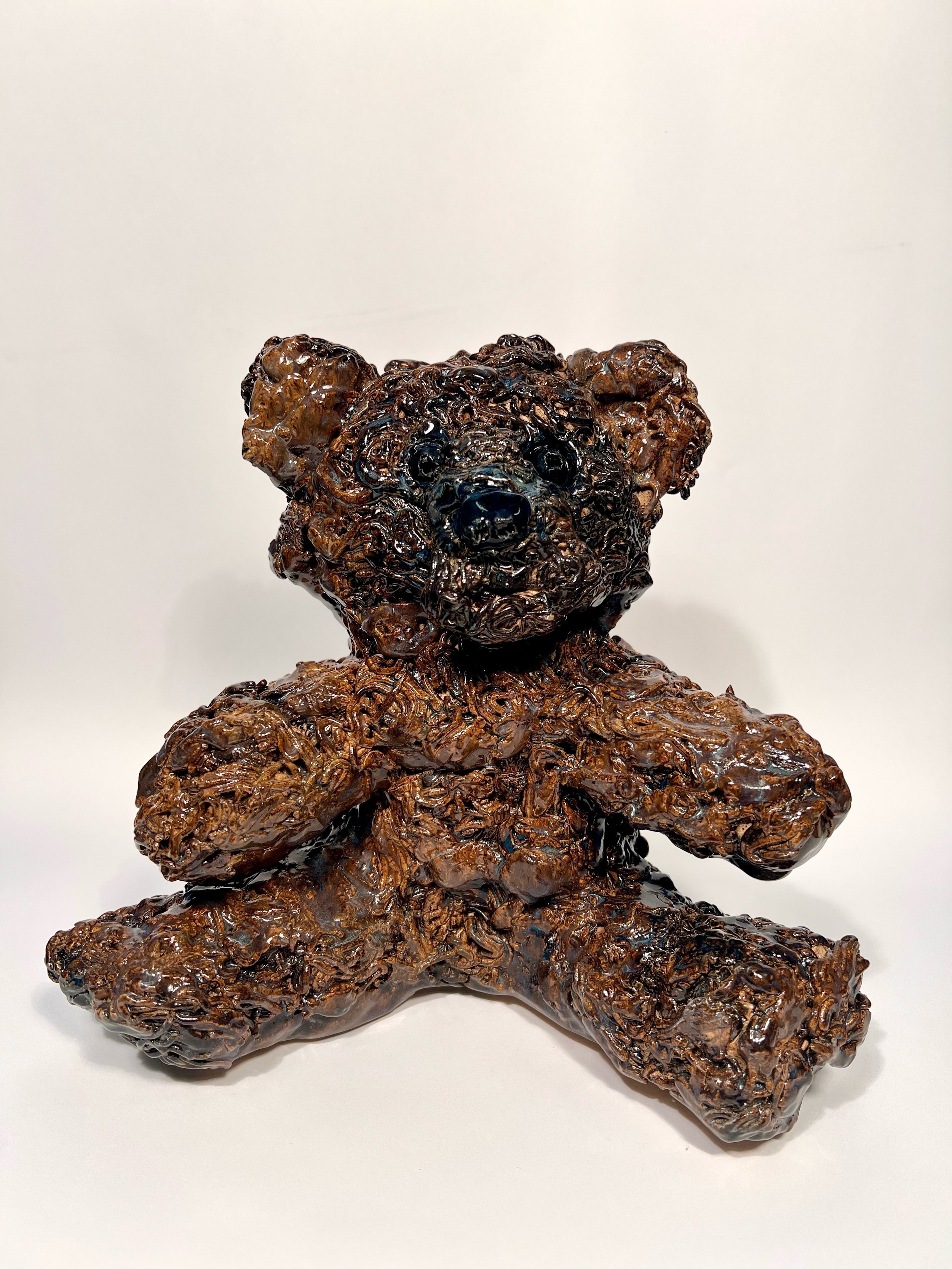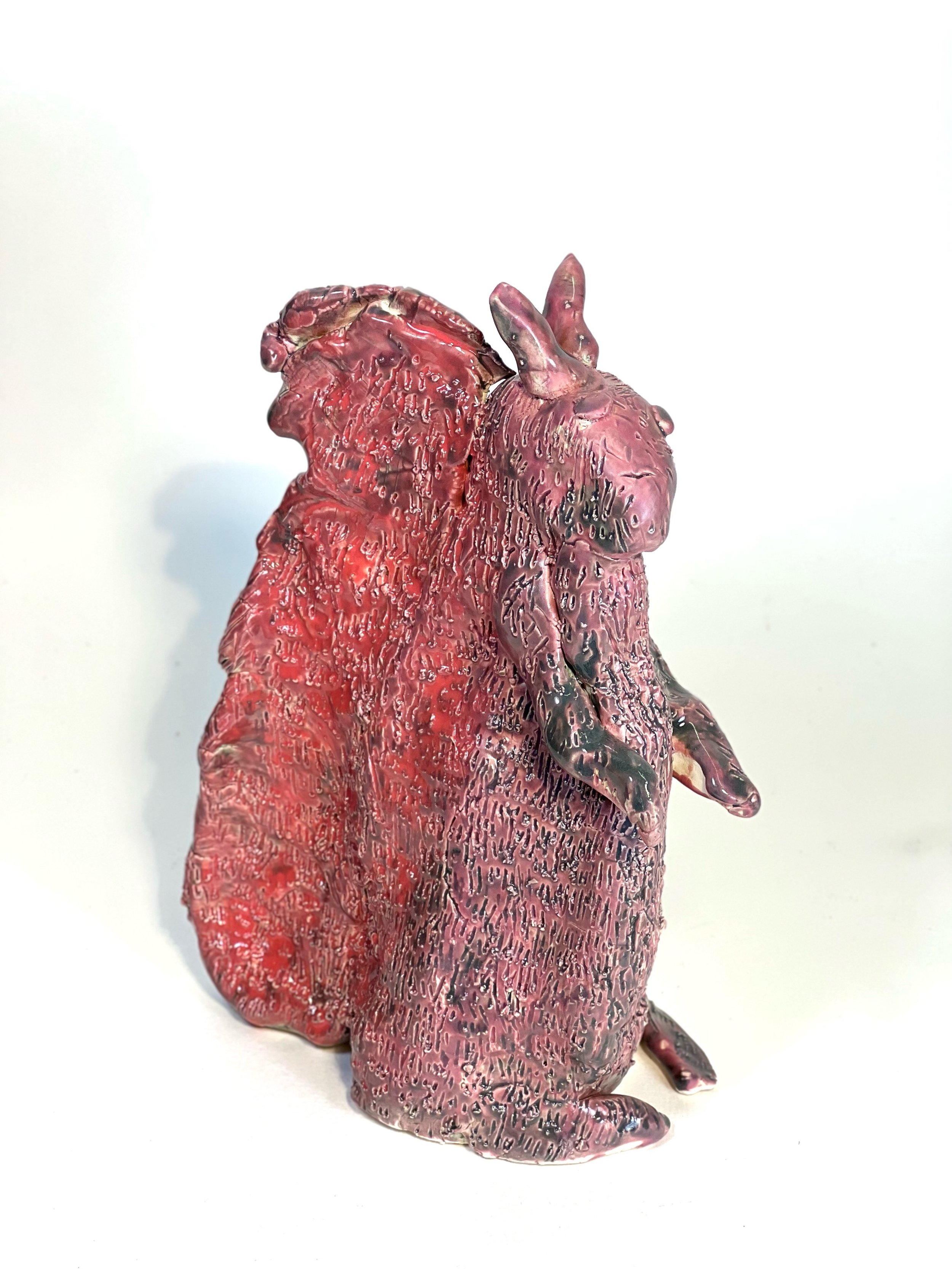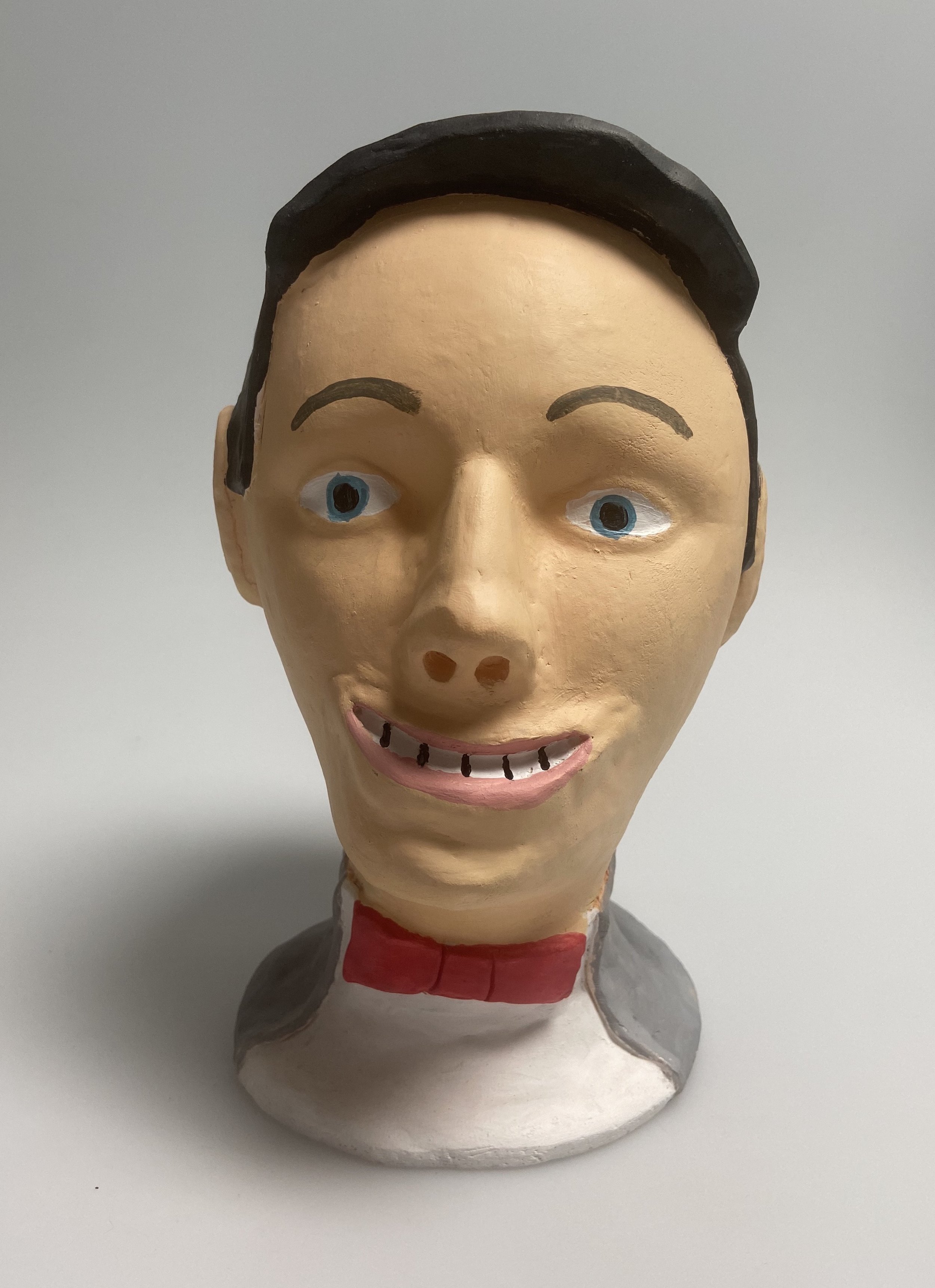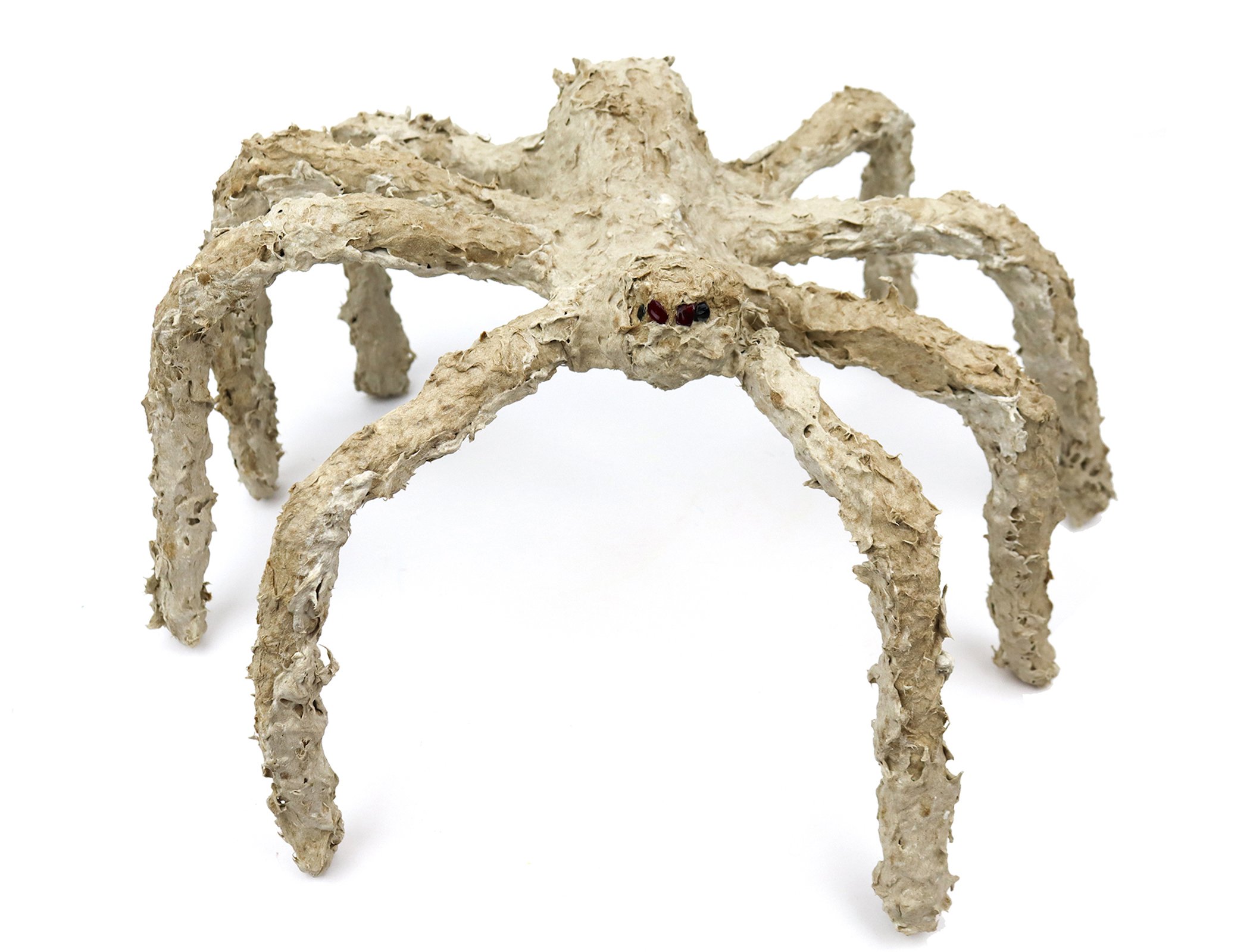Disability Visibility at NCECA, 2023
Something Fishy - Kramer Hegenbarth from Interact Center for Arts (Saint Paul, MN)
After experiencing the exciting whirlwind that hit Cincinnati, known as the NCECA (The National Council on Education for the Ceramic Arts) 57th annual conference, there is a sense of awe in our community at the depth of talent from midwest potters. I heard about NCECA because I work at Visionaries + Voices, an inclusive arts nonprofit providing creative, professional, and educational opportunities for adults with disabilities. I felt so excited that there were more than 90 free community focused exhibitions running concurrently with the conference March 15th-18th.
Left to right: Courtney Combs-Mock (V+V Marketing Strategist), Morgan McKnight (V+V Volunteer Coordinator and co-curator of Clay Nowadays), Seana Higgins (V+V Education Director and co-curator of Clay Nowadays), and Neil Dignan (V+V Artist)
I had the pleasure to talk with and write to several curators, educators, and artists after NCECA who intentionally worked to have art shown at this conference from artists with mental or physical disabilities, to get their unique prospective on the event; Seana Higgins and Morgan McKnight (curators of “Clay Nowadays” at Visionaries + Voices), Carly Riegger (co-curator of “#CripClay” at Solway Gallery) and artist Valerie Stepp (volunteer at Visionaries + Voices and artist at Queen City Clay).
As marketing strategist of Visionaries + Voices, I was interested in process of applying to the conference from the perspective of a curator.
MM: (For Clay Nowadays) When we caught wind of the applications opening, Higgins was looking out for it. The bulk of the application we completed in an afternoon.
Artwork left to right: “Be My Friend“ by Joyce Moseley from Center For Creative Works (Wynnewood, PA), “Hunting Squirrel“ by Tamisha Williams from Center For Creative Works (Wynnewood, PA), “PeeWee Herman” by Tyler Spohn from Visionaries + Voices, and “Spider“ by Toni Lane from Art Enables (Washington, D.C.)
SH: You have to be very early to get people (nation wide outsider art studios) to agree to be involved with examples of our work… We went into this application process sure that even if we didn’t get accepted into the conference we were still going to do this show.
CR: (For #CripClay) We reached out to others known in the ceramics community to have disabilities of all kinds, as well as posted on social media as a call for disabled artists… Applying for the show was in a way advocating for our voices to be heard. We wrote out how important disabled artists are in our community, yet there wasn’t a show or feature of us in NCECA before.
At Visionaries + Voices, “Clay Nowadays” opened a day early for the NCECA collector’s tour as their first stop.
SH: When they came to the show they were interested and receptive to the concept.. they toured the gallery and the studio, talked to the artists and bought work!
MM: I was pleased with how much time a group of 35 took to look and ask questions about the art.. It was so exciting to get new people, who have never heard of V+V, into our studio and experience our art and artist like ours.
#CripClay at Carl Solway Gallery
#CripClay was presented by “We Are Not Invisible” at Carl Solway Gallery, Cincinnati OH and in their curatorial statement they express “#CripClay is an exhibition of disabled artists by disabled artists concurrent with the 2023 NCECA conference. We are not here to be an inspiration, to showcase how much we’ve overcome or to be asked what’s wrong with us. We are here to be recognized and acknowledged…
Disability does not mean an artist cannot be successful or a valuable member of a community; this is not a one size fits all abled-bodies only medium. Disability is the only minority group that anyone can join at any time. Let’s show what we can do.”
This strong stance on inclusion in exactly what we need in art; disability is a minority group that makes up 16% of Earth’s population transcending race, age, and economic status.
CR: We are so glad that NCECA took the step to include disabled artists. There is still a lot of work to do for inclusion we want to see, but this was the first step…We were the first concurrent exhibition through NCECA. (We included) artists from all over the country as well as some from the UK and Canada.
VS: In #CripClay I met an artist featured that told me a lot about their ceramic lemon titled “Ashamed” piece at Soloway gallery. I was inspired by how much she expressed in this one piece.
Left to Right: Seana Higgins, Morgan McKnight, Rachelle Rudolph (V+V Artist), Keith Moggach (Project Coordinator at Center for Creative Works, PA), J.R. Bradshaw (V+V Artist), Valerie Stepp (Queen City Clay Artist)
The steps I saw NCECA move to give artists with disabilities a platform was accepting these 2 outsider art shows into the conference, offer free public forums led by artists and educators on the spectrum of disability about adaptive techniques, and finance theses artists to attend the conference. The Clay Conversations took place at Duke Energy Convention Center in front of interested crowds over the hundreds.
V+V artists (J.R. Bradshaw and Rachelle Rudolph), staff (Higgins and McKnight) and a volunteer (Valerie Stepp) were sponsored by NCECA to attend the conference and lead the conversation topic of inclusion regarding artists with disabilities in the ceramics field.
MM: We started our clay conversation with a guided meditation for the audience. (V+V Artist) Rachelle Rudolph said it made her more calm and ready for the experience.
SH: There was a section (of the clay conversations) about tips and tricks which was really interesting for many people. Rachelle talked about how her hands are small so she chooses smaller tools to work with. Someone mentioned adding grip tape and tennis balls to make tools more accessible and easier to use.
Left to right: Nick Kraft, Valerie Stepp, and Ben Clark working on the Brent Wheel
Recently, Queen City Clay has been collaborating with Visionaries + Voices artist Nick Kraft through ceramic artist and volunteer Valerie Stepp. Nick is a teaching artist that has been getting more experience throwing on the wheel with Valerie at Visionaries + Voices at the Northside Studio. Recently Queen City Clay acquired a wheelchair-accessible wheel that is the perfect height for Nick while in his wheelchair.
VS: Nick and I talked about the benefits of working with clay, how it affects your body positively, and the work you can do emotionally while working with clay. Nick comes to QCC on Tuesdays regularly now and he has been showing us non traditional techniques on the Brent Wheel that have been very successful for Nick.
Nick Kraft and his ceramic bowl art collaboration with Valerie Stepp
NK: When I first heard about it, I wanted to work on the wheel. I started learning (the wheel) at V+V and then I got to use the wheelchair accessible wheel. I use clay to be mindful and process loss in my life in a positive way. It’s challenging for me, and it loosens my hands if they’re tight.
Reigger and fellow curators of #CripClay, Victoria Walton and Amanda Barr, also spoke on a separate panel during NCECA about inclusion and disability as artists.
Left to right: Victoria Walton, Carly Reigger, and Amanda Barr
CR: So many people who attended our show and panel thanked us up and down for providing this space. I knew it was a needed part of our community, but seeing how many people were excited by this really showed how important it is.
How many aspects of creating ceramic art is more difficult when your hands shake or with limited vision? I want to challenge more art conferences to practice giving space to listen and respond to disability advocates in our community.
SH: Already I’m thinking about NCECA next year, which will be hosted in Richmond.
MM: Ceramic works have always struggled when put up against fine art shows. Clay Artists are resilient and will fight to find a place to have work shown. THis conference makes the work worth it because of all the visibility.
CR: We need more conversations about disability, more safe spaces for disabled folx, and flexible, accessible approaches to ceramics. I see these as the next steps in our advocacy. I am thrilled to keep the conversation going for what accessible studios look like and how we can include people with disabilities in clay.
VS: You can judge a society by how they treat minorities, if we are lifting up the people who don’t have a voice, or recognition, it can change the quality of a person’s life. There needs to be more resources, accessibility, and grants awarded to places that support artists with disabilities.
At first, you're helping them but really, they are helping you. My life is so much more rich working with artists with a variety of abilities… People with disabilities wouldn’t have opportunities in art if it wasn’t for places like V+V and advocate curators like #CripClay.












